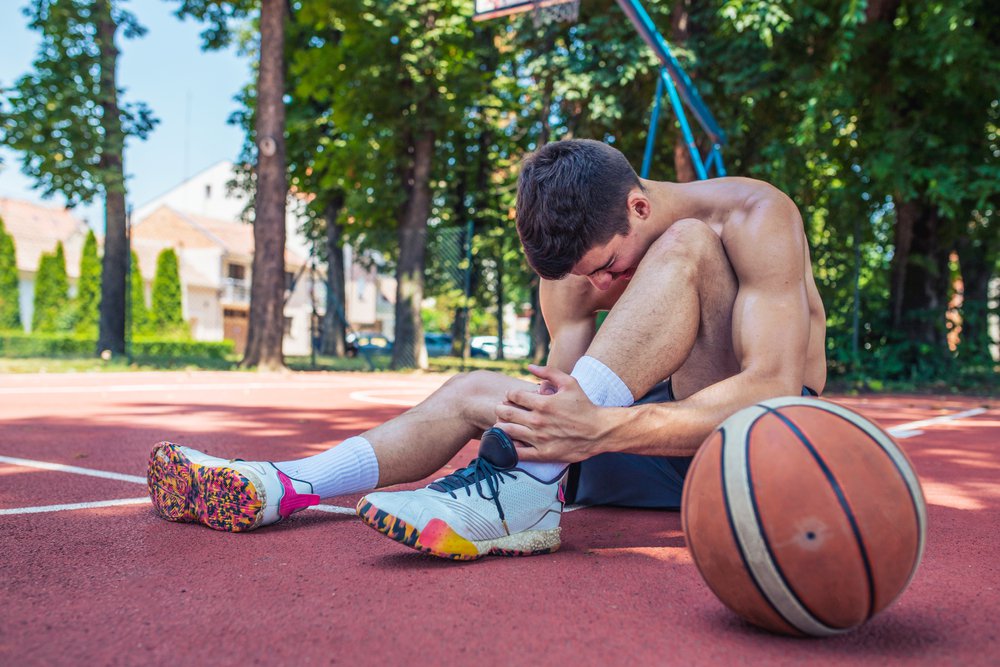 Basketball tournament season is upon us again! This exhilarating sport is popular among athletes of all ages, but it can also result in serious injuries. Whether you are a student athlete or a recreational player, it is important to have some knowledge about basketball injury prevention and treatment. Here are 8 of the most common basketball injuries to look out for this season.
Basketball tournament season is upon us again! This exhilarating sport is popular among athletes of all ages, but it can also result in serious injuries. Whether you are a student athlete or a recreational player, it is important to have some knowledge about basketball injury prevention and treatment. Here are 8 of the most common basketball injuries to look out for this season.
1. Rotator Cuff Injuries
Overhead movements in basketball can lead to injuries of the rotator cuff, a group of muscles and tendons around the shoulder joint. Tendonitis (inflammation) and tears can develop in the rotator cuff from repetitive motions. Depending on the severity of the injury, treatment can range from rest and physical therapy to surgery. Because of this, pain and tenderness in the shoulder should be taken seriously so that the injury doesn't worsen.
2. Jammed Fingers
Since basketball requires a lot of passing, it can leave players' fingers vulnerable to injury. One extremely common finger injury among basketball players is jammed fingers. Jammed fingers usually happen when the ball hits the fingertip, stretching the ligaments. In severe cases, this may result in torn ligaments or finger fractures that require surgery. In less serious cases, however, the injury can usually be treated with therapy and buddy taping to an adjacent finger. Watch out for symptoms like bruising, pain, swelling, and the inability to move the affected finger.
3. ACL Tears
Knee injuries are common among athletes, and ACL tears are one of the most notorious sports injuries. The ACL (anterior cruciate ligament) connects the femur (thigh bone) to the tibia (shin bone), and it is typically injured during sudden stops or quick directional changes. Injuries to the ACL can cause pain, swelling, and popping in the knee as well as an inability to bear weight. ACL injuries usually require surgery, and a painful, swollen, unstable knee should be examined by an athletic trainer or physician as soon as possible after an injury so treatment can be started.
4. Jumper's Knee
Patellar tendonitis, also known as jumper's knee, is another common knee injury. It happens when the patellar tendon, which connects the kneecap to the tibia (shin bone), becomes inflamed. It is common among basketball players because of constant running and jumping on a hard playing surface. Symptoms of jumper's knee include swelling and pain, especially when moving the knee. Without treatment, jumper's knee can sometimes lead to a tear in the tendon.
5. Shin Splints
Medial tibial stress syndrome, better known as shin splints, plagues athletes of all kinds. It is a type of overuse injury that is caused by stress to the muscles, tendons, and bone tissue in the lower leg. Players who have shin splints usually experience pain, tenderness, and swelling along the shin. Shin splints typically heal with rest and ice, but it is still important to seek treatment so that the injury does not turn into a stress fracture.
6. Ankle Sprains
Ankle injuries occur frequently in basketball. Specifically, sprained ankles happen frequently when a player suddenly changes direction or lands on another player's foot. A sudden twist can overstretch the ligaments in the ankle, leading to a sprain. Ankle sprains may cause pain, swelling, limited mobility, bruising, and other symptoms. Treatment usually involves the RICE protocol (rest, ice, compression, and elevation) and may also include physical therapy.
7. Achilles Tendon Tears
Jumping and sudden changes in direction can be hard on the Achilles tendon, which connects the calf muscles to the heel bone. When the Achilles tendon tears, it usually results in sudden, severe pain in the back of the calf. Achilles tears frequently require surgery to repair, so evaluation by a physician should be sought soon after the injury.
8. Foot Fractures
Stress fractures in the feet are common overuse injuries in basketball. The running, jumping, and quick stopping that occurs in the sport can put a lot of stress on athletes' feet. When muscles become too tired, they can no longer absorb this stress, leaving bones susceptible to fractures. Pain and swelling that become progressively worse and pain with weight bearing are common signs of stress fractures.
Tips for Preventing Injuries on the Court
1. Warm up.
Warming up properly is paramount when it comes to preventing injuries. It increases your heart rate and blood flow to your muscles so more oxygen can reach them. This will make movement easier and decrease the chance of straining your muscles.
2. Use proper footwear.
Basketball shoes are designed to help you perform your best on the court. A good shoe will support your feet and ankles and help reduce your risk of injuries.
3. Don't overdo it.
While striving to improve your performance, it can be tempting to push past your limits. However, taking time to rest and recharge during the season can help prevent overuse injuries so you can stay on top of your game.
Basketball can be incredibly fun and rewarding, whether you're playing at the collegiate level or just shooting hoops with friends. While you're hitting the court this season, make sure to take the necessary steps to prevent injury. If you do hurt yourself, it's important to seek treatment as soon as possible. Luckily, Dr. Brian Kelly is an experienced orthopaedic surgeon who can provide you with the treatment you need to recover and live pain-free. For comprehensive care in sports medicine, make an appointment with Dr. Kelly today.
Dr. Brian Kelly, MD is an orthopaedic surgeon and sports medicine doctor experienced in treating a variety of injuries. Dr. Kelly and his expert team of physicians will make sure that you get the treatment you need to get back in the game. If you have sustained a sports injury, schedule an appointment at the offices of Dr. Brian Kelly today.
